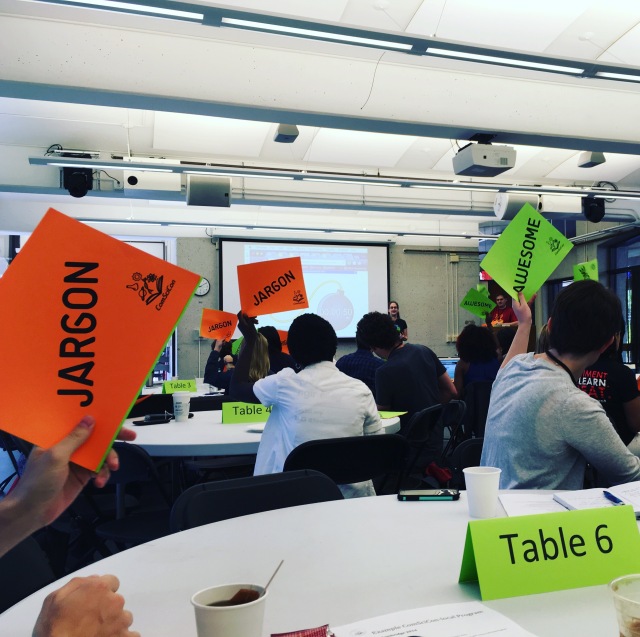
The annual Communicating Science workshop for graduate students, ComSciCon, gathered students and science journalists from all over the country to meet for a three day workshop in Cambridge, Mass. last week. The conference included workshops on developing K-12 curriculum, using social media to communicate science and telling a good story in addition to panel discussions on diversity in STEM, science advocacy, media and journalism, and a keynote by Ed Yong, science writer for the Atlantic.
The workshop is open to scientists from all fields: geology, astronomy, ecology, computer science. Besides meeting enthusiastic young science communicators and workshopping some of my own writing pieces and podcast drafts, I was exposed to new resources that have been vetted by science journalists as useful to budding young science communicators. Things like slack, and TweetDeck popped onto my radar. I was also exposed to people who were doing science communication well and in a wide array of media. Youtubers and instagrammers and filmers and writers. Here’s my top ten list, in no particular order, of trending science communicators and their methods to follow, retweet, like, be like, read, etc.
1. Ed Yong, science writing. Ed “arranges words for a living,” which is how he introduced himself before his keynote. He uses twitter to broadcast his writing and attract a general audience. He is a shining example of writing in a “show, don’t tell” way to transport the reader into his stories. One of his favorite stories is his piece on the discovery of a third-party member in the lichen symbiosis.
2. Crazy Aunt Lindsey, YouTube. Crazy Aunt Linsey broadcasts science activities for kids on her YouTube channel. She is a black female advocating for STEM and helping to change the image of what a scientist looks like. Her videos are fun and accessible and are helping bring science to a wide audience. Follow her on twitter @AuntLindsey.
3. The Story Collider, podcast. The Story Collider podcast can be described as the Moth for scientists. They also host workshops on how to tell a good story (which was a part of this year’s ComSciCon) and have live shows in cities around the country and in the UK. They accept pitches from anyone with science stories to tell so consider sending them your pitch. Download on any podcast app to listen.
4. Gianna Savoie, film. Gianna uses film to communicate biology to a broad audience. She has made documentaries in extreme locations and on diverse subjects from Life in Death Valley to wolverines.
5. Ali Mattu, YouTube. In addition to be a full time medical researcher at Columbia, Ali also has his own YouTube channel that communicates science to kids. He hosts the “Psych Show” on YouTube.
6. Shayle Matsuda, sketch notes. Shayle is a PhD student that led a workshop on making sketch notes during ComSciCon. He advocates using sketch notes to stay focused during conferences and seminars, and create visuals to share the messages of science talks.
7. Nicky Case, games. Nicky develops interactive games to teach a general audience about science concepts such as synchrony in fireflies and how neurons work on the website explorabl.es.
8. SciSnap, snapchat and instagram. Science Snap, or Scisnap, captures quick mini-experiments as videos to send to followers on instagram and snapchat. The group also posts to Facebook with quick videos and explanations of scientific phenomena.
9. edX, MOOCs. edX offers online classes in all fields including the sciences to make learning interactive and widely available on the internet.
10. Stephanie Page, blogging and tweeting. Stephanie started the #BlackandSTEM hashtag on Twitter and has helped draw attention to diversity issues in STEM fields.
If you want to be a good writer, the saying goes, than you need to be a good reader. The same is likely true for most things: good podcast creators, need to listen; good film makers need to watch films; good science communicators, get inspired by other science communicators.
